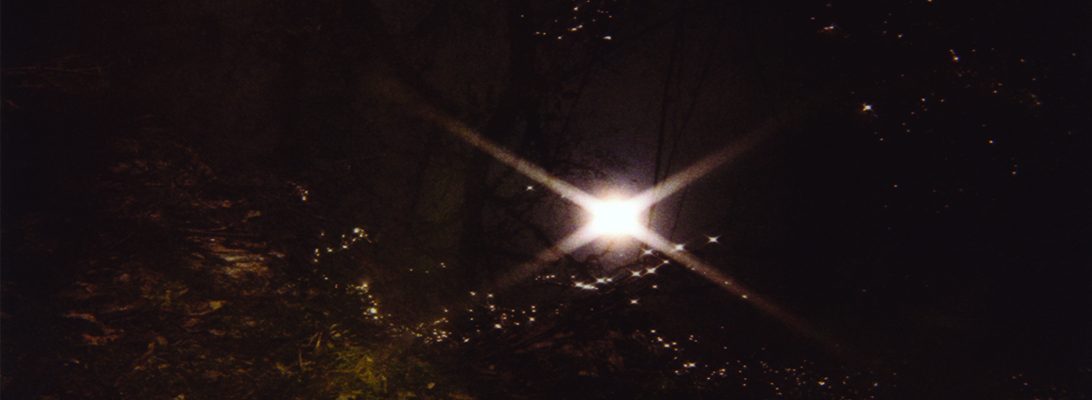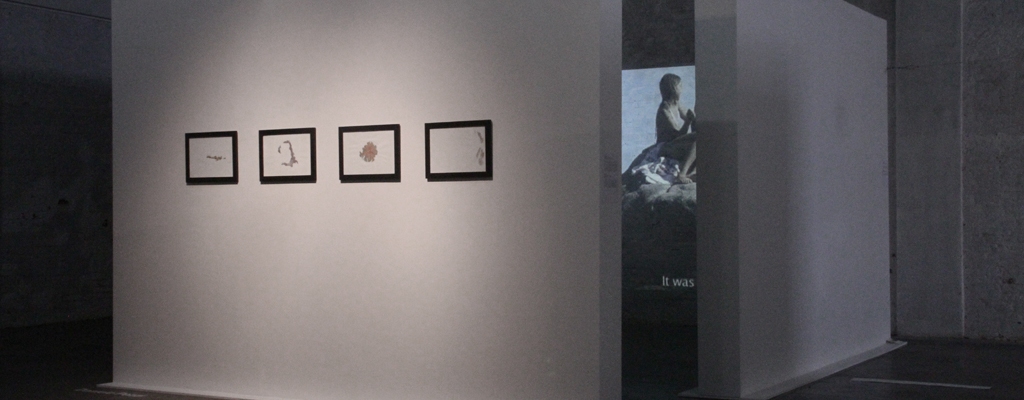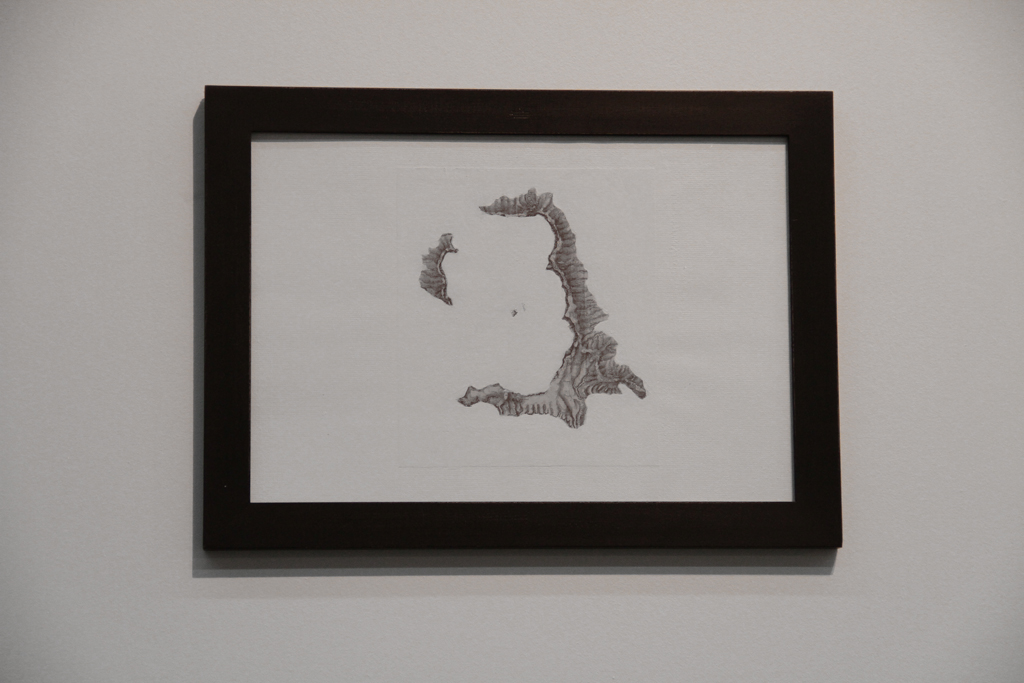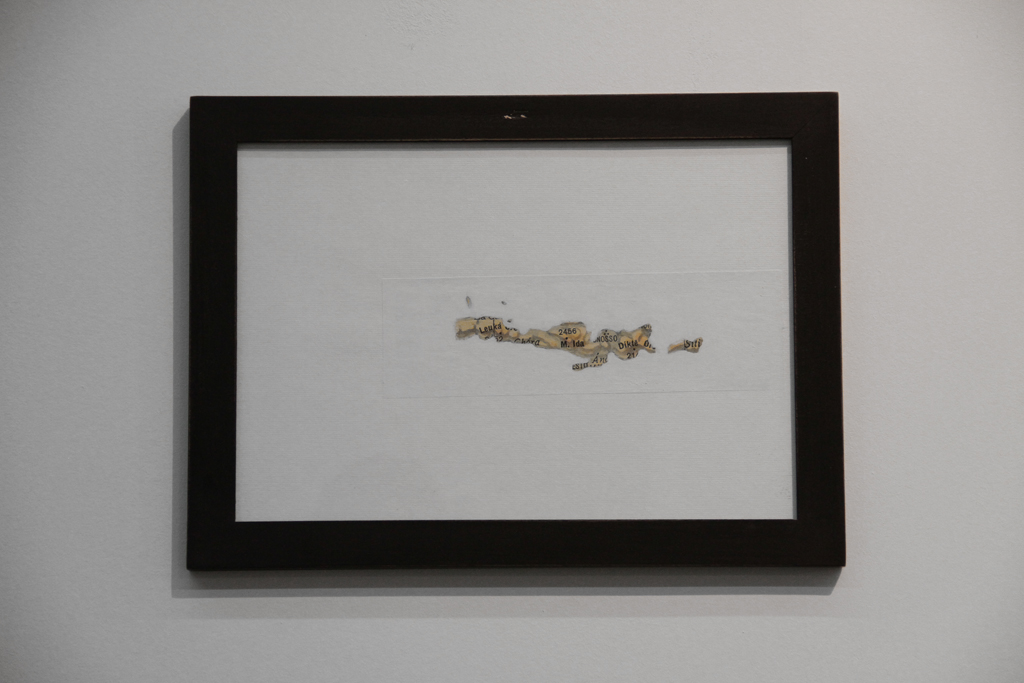———————english below
a cura di G.L.O.W. Platform
Organizzazione a cura di Alberto Podio e Allegra Ravizza
Testi critici a cura di Silvia Panerai
I giovani artisti italiani sono inconsapevolmente legati al passato da un forte retaggio storico del loro paese. Talvolta questo è visto come una particolare linea guida e un punto di partenza per il linguaggio della loro arte, mentre altre volte è visto come un confine da valicare, come necessità di un nuovo linguaggio in cui i nuovi messaggi possano essere tradotti. Inoltre, quando ci riferiamo ai confini, ci riferiamo anche al passaggio tra gli spazi chiusi e quelli aperti con i relativi esiti simbolici e fisici che aumentano l’attenzione verso i giovani artisti italiani che G.L.O.W. Platform è orgogliosa di presentare alla Biennale Internazionale di Mosca per Giovani Artisti.
Le frontiere richiamano i confini, linee entro le quali le persone vengono costrette, ma anche cornici, finestre attraverso le quali possiamo guardare e scoprire nuovi paesaggi. Attention! Border Crossing mostra come le molteplici forme di espressione cui gli artisti contemporanei hanno accesso oggi, possano rappresentare i cambiamenti, i contrasti, i conflitti tanto quanto le interazioni, le individualità e le nuove comunità.
Gionata Gesi Ozmo disegna con la sua matita riproduzioni di immagini trovate digitando su Google le parole “identità” e “resistenza” esaminando la grafica e il significato dei simboli mentre ricrea un nuovo linguaggio con composto di appropriazioni indebite e combinazioni di modelli visivi di diversa provenienza. L’intenzione è di creare lavori che abbiano più di un valore semantico, offrendo agli spettatori solo una superficiale immediata leggibilità. In realtà questi lavori combinano un sistema di significati profondi e di riferimenti articolati su differenti livelli richiamando la struttura di antichi miti e leggende.
Luca Pozzi conduce una ricerca mirata alla formulazione di una visione totale dell’esperienza, capace di estendere le possibili corrispondenze che ne potrebbero emergere in una dimensione della conoscenza priva di specificità. Partendo da contributi teoretici espressi da ricercatori e artisti indirettamente coinvolti (attraverso conversazioni sotto forma di interviste) nei suoi progetti, l’artista, sfruttando diversi media e materiali, realizza installazioni ibride, caratterizzate da un originale utilizzo della forza di gravità. Per l’artista, concepire la gravità da un nuovo punto di vista ha sempre portato a rivoluzioni paradigmatiche; è la chiave che garantisce l’accesso a ogni spazio: non più nei termini di viaggiare “nello spazio”, ma “tra gli spazi”. Costituisce un prezioso legame tra gli in-concepibili mondi fisici e teoretici, la nave ammiraglia di ogni informazione, sia essa astratta o materiale.
La teorica costruzione di confini, invece, è elaborata nel video di Daniele Pezzi Tarshish, in ricordo di una catastrofe. “Tarshish” è la calma prima della tempesta e la difficoltà della vita dopo la distruzione. Il titolo si riferisce all’antica città di Tartesso. La sua storia si perde nel passato e il suo destino è connesso alla fine della potente isola di Atlantide. Non è chiaro se fosse un fenomeno naturale o una punizione divina, ma di sicuro questo fenomeno ha modificato l’equilibrio, le regole e i confini dell’ecosistema. Il video è il contesto di un tempo disconnesso tra le immagini, dove gli eventi accadono, e il racconto, dove tutto è già accaduto.
I dipinti di Mattia Barbieri mischiano il profumo dei fiori e l’olezzo di marcio, l’uomo e la donna, l’uomo e gli animali, l’ironia e la nostalgia e ritrae prepotentemente tutto ciò che vede. Per questa abilità i dipinti dell’artista sono stati spesso paragonati a quelli di Mario Schifano, un caleidoscopio di immagini capace di trasmettere vibrazioni e colori allo stesso tempo, dove il mondo esterno si riversa vertiginosamente.
Noi viviamo immersi nell’infinito, ma ancora concentrati sul giardino del nostro vicino. La tecnologia dovrebbe abbattere tutte le barriere, ma alcuni confini invalicabili creati dall’uomo causano ancora guerre secolari. Il dipinto di Friedrich Viandante sul mare di nebbia (1818), riassume in un’immagine la relazione tra l’uomo e l’infinito, rappresentando come ogni progetto umano annichilisce di fronte all’infinito. I ritratti di Tommaso Lipari (scala reale 1:1) rappresentano veri uomini, donne e bambini nella stessa posizione del Viandante sul mare di nebbia. Tutti i personaggi, uno di fianco all’altro, paradossalmente, creano un muro, un confine.
I lavori di Pasquale di Donato presentano la relazione tra l’interiorità e l’esteriorità che ci fanno sognare di andare oltre i confini della nostra mente: nuvole reali, false case, piccole porte curiose, un uomo invisibile, gabbie di libertà e ritratti di respiri. Come nella sua recente installazione Turris Eburnea eseguita per la Torre Branca di Milano, l’artista dimostra, nonostante la sua giovane età, una chiara e costante ricerca dell’aleatorietà dei limiti e dei confini, concetti che dovrebbero identificare la percezione dello spazio e contemporaneamente richieste di identità.
The Bounty Killart presentano Suitcase Dreams. Il lavoro consiste in una semplice valigia sulla quale è applicato uno spioncino. Attraverso questo buco è possibile sbirciare in modo sicuro e segreto. Dietro lo spioncino, dentro la valigia, vi è una piccola scatola che dà ospitalità ad alcune statuette di “viaggiatori illegali”, che sfruttando l’occasione della valigia che viaggia verso la Biennale, attraversano il confine evadendo ogni controllo. Fuorigioco! (Off-side!), invece, è un arazzo sul quale gli artisti applicano nuove immagini di figure umane usando tecniche miste come la serigrafia e la pittura acrilica. La scena rappresenta una tipica azione di calcio che finisce con un fallo assegnato ad Adolf Hitler che attraversa la linea di fuori gioco. Sulla parte sinistra gli “Yalta friends” (Churchill, Roosevelt e Stalin) si godono il gioco aspettando la disfatta della squadra di Hitler. Il calcio è un gioco duro!
Per la Biennale Joys, invece, torna alle sue origini di street artist e presenta, come anche Bros, un lavoro in situ. Gli artisti hanno sfidato l’arte inserendola in un contesto non artistico. Gli artisti “street” non ambiscono a cambiare la definizione di un’opera, ma piuttosto a mettere in discussione l’ambiente circostante con il proprio linguaggio. John Fekner definisce l’arte di strada come “tutta l’arte nelle strade che non sono graffiti”. Dalla sua “tag” (in gergo la firma e lo pseudonimo che ogni artista si dà) disegnata sui muri delle città dal 1992, Joys inizia a trasformare questo simbolo plasmando una prospettiva e una profondità architettonica della linea che subisce una trasformazione nello spazio espandendosi verticalmente, orizzontalmente e tridimensionalmente nella sua tag.
La ricerca svolta da Bros è sempre stata basata sulla comunicazione di massa in connessione con il tessuto urbano, rivolgendo la sua attenzione alle persone che vivono in città con pubblici lavori d’arte in situ come After Sport Art, realizzato su un’impalcatura a Milano e il provatorio Art on Sale 70% Discount o quelli nelle vetrine di una galleria a Torino e di un sexy shop a Milano.
Il collettivo Studio ++ comprende tre giovani brillanti architetti con una grande sensibilità per l’arte. Questo gruppo si distingue nel panorama contemporaneo italiano per la capacità di relazionarsi all’oggetto, non in modo architettonico, ma scultoreo evidenziandone il “peso” e, allo stesso tempo, il “vuoto”. Nell’opera di Studio ++ le categorie di spazio e tempo divengono matrici di una tensione tutta umana che cela ansie e sospensioni emotive, ed esige nuova capacità di analisi e di adattamento al contesto di riferimento.
Attention! Border Crossing presentata da G.L.O.W. Platform, esibirà alla II Biennale Internazionale per Giovani Artisti di Mosca lavori realizzati con le più diverse tecniche per un ampio esperimento dedicato all’uso di nuovi strumenti di comunicazione per una tematica che non può avere confini: video, fotografie, collage digitali, tanto quanto i lavori in situ saranno sviluppati per questa importante vetrina per la giovane arte italiana.
——————–english
curated by G.L.O.W. Platform
curated by Alberto Podio and Allegra Ravizza
Text by Silvia Panerai
Italian young artists are culturally and unconsciously related to the past by the huge historical heritage of our country. Sometimes this is seen as a special driving force and as a starting point for their art, whilst other times this is seen as a boundary to be crossed, as the need of a language into which new messages can be translated. Furthermore, when we refer to borders we also refer to the transition between the enclosure and an opening space with its symbolical and physical outcome that enhance the attention of the young Italian artists that G.L.OW. Platform is proud to present at the Moscow International Biennale for Young Art.
Borders recall boundaries, lines in which people are confined, but also, frames, windows through which we can look and discover new surroundings. Attention! Border Crossing shows how the multiple forms of expression contemporary artists have access to today can represent changes, contrasts, conflicts as well as interactions, individualities, new communities.
Gionata Gesi Ozmo draws with his pencil reproductions of pictures found googling the words “identity” and “resistance” examining decoration and the meaning of symbols whilst re-creating a new language made up with undue appropriations and combinations of visual samples from diverse origins. The intention is to create artworks with more than one semantic value offering the spectator only a superficial immediate readibility. In reality these works match a system of deeper meanings and references articulated on different levels recalling the structure of ancient myths and legends.
Luca Pozzi conducts a research programme aimed at the formulation of a comprehensive vision of experience, capable of extending its possible emerging correspondences to a dimension of knowledge devoid specificity. Drawing on theoretical contributions expressed by researchers and artists indirectly involved (by means of conversations in the form of interviews) in his projects, the artist, by employing different media and materials, comes to realize hybrid installations, characterized by an original use of the force of gravity. For the artist, conceiving gravity in new terms has always led to paradigmatic revolutions; it is the key that grants access to every space: no longer in terms of travel “in space” but “between spaces”. It constitutes a precious bond between the in/conceivable physical and theoretical worlds, the mother ship of all information, be it abstract or material.
The theoretical construct of bounds, instead, is elaborated in the video by Daniele Pezzi Tarshish, in the memory of a catastrophe. “Tarshish” is the calm before the storm and the complexity of life after the havoc. The title refers to the ancient city of Tartesso. Its history is lost in the past and its destiny is linked to the end of the mighty Atlantis island. It’s not clear if it was a natural wonder or a divine punishment, but certainly the phenomenon modifies the balance, the rules and the bounds of the ecosystem. The video is the context of a time disconnection between images, where events took place, and the tale, where everything already happened.
Mattia Barbieri’s painting mixes the perfume of flowers and the smell of rotten leale, the male and the female, men and animals, irony and nostalgy and portrays irrepressibly all that he sees. For this ability of his the artist has been often compared to Mario Schifano’s painting, a kaleidoscope of images capable of transmitting shake and colours at the same time, where the outer world dizzily pours.
We live dipped in the infinity but still focused on our neighbour’s garden. Technology sould break down every barrier but some impassable boundaries created by men still cause secular wars. Friedrich’s painting Wanderer above the Sea of Fog (1818), summed up in an image the relationship between man and infinite, representing how the annihilation of any human project in front of the infinite. Tommaso Lipari’s portraits (full-scale 1:1) represent true men, women and children in the same pose as the man in Wanderer above the Sea of Fog. All the characters, side by side, will paradoxically create a wall, a boundary.
Pasquale di Donato’s artworks present the relationship between the inside and the outside making us dream going beyond the borders of our mind: real clouds, fake houses, small curious doors, an invisible man, cages of freedom and portraits of breaths. Just as in his recent installation Turris Eburnea the artist demonstrates, despite his young age, a clear and on-going research on the aleatority of limit and border, concepts that should identify the perception of space and instead question identity.
The Bounty Killart presents Suitcase Dreams. The work is based on a simple suitcase on which a spy-hole is applied. Through this hole it is possible to peep the content safely and secretly. Behind the spy-hole and inside the suitcase, there’s a little box that gives hospitality to a few figurines of “illegal travellers”, that, using the opportunity of the suitcase travelling to the biennale, cross the borders, avoiding any control. Fuorigioco! (Off-side!), instead, is a tapestry on which the artists applied new images of human figures using mixed media as serigraphy and acrilic painting. The scene represents a typical football action ending with a foul assigned to Adolf Hitler who is crossing the off-side border. On the left side the “Yalta friends” (Churchill, Roosevelt and Stalin) are enjoying the match waiting for the defeat of Hitler’s team. Football is a hard game!
For the Biennale Joys, instead, turns back to his origins as street artist and will present, just as Bros, a site specific work. Artists have challenged art by situating it in non-art contexts. ‘Street’ artists do not aspire to change the definition of an artwork, but rather to question the existing environment with its own language. John Fekner defines street art as “all art on the street that’s not graffiti.” From his tag (in jargon, the signature and pseudonym each street artist gives himself), impressed on the city walls since 1992, Joys
started transforming this symbol moulding a perspective and architectonic depth of the line that undergoes a transformation through space expanding vertically, horizontally and three-dimensionally.
The research Bros carries out has always been based on mass communication in dialogue with the urban texture directing his attention to the people who live the cities with public site specific artworks such as After Spot Art, realised on the scaffolding on a site in Milan and the provocative Art on Sale 70% Discount or those on the window of a gallery in Turin and a sexy shop in Milan.
The collective group Studio ++ comprises three young brilliant architects with a great sensitivity for art. This group stands out in the Italian contemporary scene for the ability of relating to the object, not in an architectural perspective, but sculptural, enhancing at the same time the “weight” and the “void”. In the artworks of the collective group Studio ++ the categories of space and time become matrix of a very human tension that conceals anxieties and emotional suspensions and therefore demands new skills to analyse and adapt to the reference frame.
Attention! Border Crossing presented by G.L.O.W. Platform will exhibit at the 2nd Moscow International Biennale for Young Art artworks realized with the most diverse techniques for a broad experiment devoted to the use of new communication tools for a theme that can have no borders: video, photography and digital collage as well as site specific works will be developed for this important showcase for young Italian art.
Un progetto realizzato con il contributo di / The project is realized with the contribution of:
NOVALIS CONTEMPORARY ART, TORINO
ALLEGRA RAVIZZA ART PROJECT, MILANO
GALLERIA 42 CONTEMPORANEO, MODENA
FEDERICO LUGER GALLERY, MILANO
N.O. GALLERY, MILANO
Opening friday 2 uly 2010
The White Hall – Winzavod Contemporary Art Center
4-th Syromyatnicheskiy lane, 1, bld. 6, Moscow
Orario: dal martedì alla domenica dalle 11.00 alle 21.00. Lunedì chiuso
ingresso libero









































You must be logged in to post a comment.